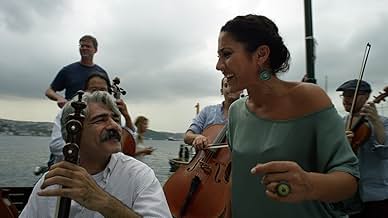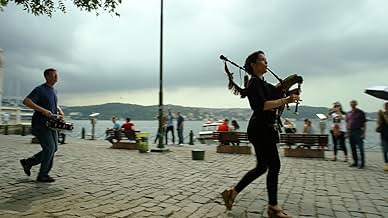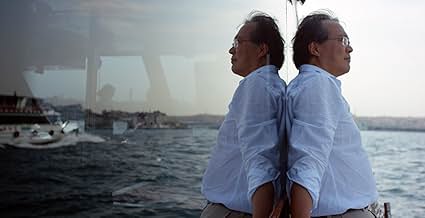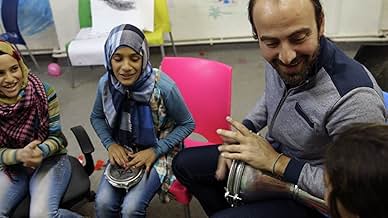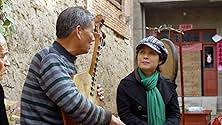Ajouter une intrigue dans votre langueCellist Yo-Yo Ma and other international artists of The Silk Road Project discuss their philosophies on music and culture.Cellist Yo-Yo Ma and other international artists of The Silk Road Project discuss their philosophies on music and culture.Cellist Yo-Yo Ma and other international artists of The Silk Road Project discuss their philosophies on music and culture.
- Récompenses
- 7 victoires et 8 nominations au total
Histoire
Le saviez-vous
- AnecdotesA poster for this film can be seen in The Line Substitution Solution (2016) when the guys are waiting in line at the theater.
- ConnexionsEdited from De Mao à Mozart: Les Aventures de Isaac Stern en Chine (1979)
Commentaire à la une
Music documentaries can be fascinating in many cases. This is the case of The Music of Strangers, the documentary produced and directed by Morgan Neville which tells the story of the wonderful musical adventure and inter-culture experience which is 'The Silk Road' ensemble and organization started in 1998 by the famous cellist Yo-Yo Ma.
The documentary deals both with the initial phases of the project (based on filmed material from their first encounters around the year 2000) and its later evolution. While the value of the cultural interaction is quite well presented, there is less mention if at all about the novelty of the approach of gathering together artists with very different backgrounds and having them play music in a fusion mode that was maybe acceptable in jazz, but much less in classical music where many of them (including Yo-Yo Ma) came from. Actually Ma is a pioneer from this perspective, using his almost pop star reputation to bring classical music to the wider audiences, but also the music of people and peoples to the classical musicians world.
There is no central story telling in the film which mainly builds itself by the interleaved personal stories told by Yo-Yo Ma and a few of the musicians, their own perspective about the work in the the ensemble, the interaction with other musicals, and their philosophies about the scope and the benefits of the project. We have the opportunity to meet Chinese lute virtuous Wu Man and hear her speaking about the challenges of learning and making music in China immediately after the Cultural Revolution, and Spanish bagpiper Cristina Pato about building her path as a woman artist in a less developed area of Spain, we see Syrian clarinetist Kinan Azmeh talking about his feelings about making music while his country is torn by war, and Iranian musician Kayhan Kalhor telling the story of his family broken by the political situation in his country and by exile. Most of all we see their opening to dialog and artistic collaboration, their passion of talking and especially playing music. A few of the meetings, concerts, family reunions and activities of volunteering with refugees are caught also on record.Watching them is a fascinating and beautiful cultural and musical experience.
The documentary deals both with the initial phases of the project (based on filmed material from their first encounters around the year 2000) and its later evolution. While the value of the cultural interaction is quite well presented, there is less mention if at all about the novelty of the approach of gathering together artists with very different backgrounds and having them play music in a fusion mode that was maybe acceptable in jazz, but much less in classical music where many of them (including Yo-Yo Ma) came from. Actually Ma is a pioneer from this perspective, using his almost pop star reputation to bring classical music to the wider audiences, but also the music of people and peoples to the classical musicians world.
There is no central story telling in the film which mainly builds itself by the interleaved personal stories told by Yo-Yo Ma and a few of the musicians, their own perspective about the work in the the ensemble, the interaction with other musicals, and their philosophies about the scope and the benefits of the project. We have the opportunity to meet Chinese lute virtuous Wu Man and hear her speaking about the challenges of learning and making music in China immediately after the Cultural Revolution, and Spanish bagpiper Cristina Pato about building her path as a woman artist in a less developed area of Spain, we see Syrian clarinetist Kinan Azmeh talking about his feelings about making music while his country is torn by war, and Iranian musician Kayhan Kalhor telling the story of his family broken by the political situation in his country and by exile. Most of all we see their opening to dialog and artistic collaboration, their passion of talking and especially playing music. A few of the meetings, concerts, family reunions and activities of volunteering with refugees are caught also on record.Watching them is a fascinating and beautiful cultural and musical experience.
Meilleurs choix
Connectez-vous pour évaluer et suivre la liste de favoris afin de recevoir des recommandations personnalisées
Détails
- Date de sortie
- Pays d’origine
- Sites officiels
- Langues
- Aussi connu sous le nom de
- The Music of Strangers: Yo-Yo Ma and the Silk Road Ensemble
- Lieux de tournage
- Istanbul, Turquie(multiple locations)
- Sociétés de production
- Voir plus de crédits d'entreprise sur IMDbPro
Box-office
- Montant brut aux États-Unis et au Canada
- 1 176 781 $US
- Week-end de sortie aux États-Unis et au Canada
- 24 614 $US
- 12 juin 2016
- Montant brut mondial
- 1 259 588 $US
Contribuer à cette page
Suggérer une modification ou ajouter du contenu manquant

Lacune principale
By what name was The Music of Strangers (2015) officially released in Canada in English?
Répondre

